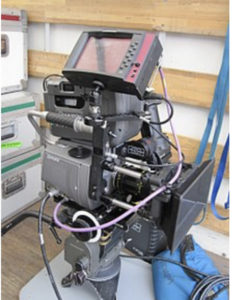Digital filmmaking is a relatively new art form that is changing the way movies around the world are created. “Digital filmmaking” is an umbrella term for many different techniques used in films to digitally enhance the audio or visual effects. These techniques are carried out with the use of special digital cameras, such as Sony’s HDVS video camera or the Arri Alexa, as well as various computer programs. These computer programs allow images or audio to be completely digitally created. Some things that can be easily added in digitally are various environments or even full blown characters.


Digital filmmaking started to become popular sometime in the 1980s. However, the first film that utilized digital filmmaking was Rainbow in 1996. A Solid State Electronic Cinematography camera was used in the production and a good amount of the visual effects, editing, as well as sound effects were done digitally.
According to journalists Adam Ganz and Lina Khatib in their article “Digital Cinema: The transformation of film practice and aesthetics” many film theorists find digital cinema to be highly controversial. On one hand the use of digital technology revolutionized cinema by enhancing production methods, reducing costs, and reducing the amount of effort needed to create a movie. On the other hand it fundamentally changed the viewing perception of the audience as well as the level of difficulty for finding an audience. By using digital cameras the footage can be stored digitally as well which greatly reduce costs. Before digital filmmaking all footage was kept on costly films that required dark rooms and temperature control. The process of turning the film into something usable was also tedious and expensive. The films themselves are expensive, highly flammable, and if not stored properly will decompose over time. If something were to catch fire there could be an indefinite amount of damage done. According to Film Connection the actual physical film will begin to decompose over time. The celluloid used to make the films eventually turns into a mushy gel and everything on the original film ends up destroyed. Due to that unfortunate factor there are films that have been completely lost from improper protection.
Now with the use of digital technology editing and additions can be made in mere minutes. There are special computer programs that allow filmmakers to put together multiple digital or audio files in order to composite one single file. This creates a more seamless process as well as a safer process. The cost of the films made it difficult for filmmakers to work independently and oftentimes they would have to pair up with big studios that had the ability to invest in their movie. Now with digital filmmaking anyone could make a clip and upload it to a platform such as YouTube and have it take off. This allows people of all socioeconomic statuses to make their way into the film industry. Before, you would have to have connections or a significant amount of money to produce a movie, but now it simply needs to go viral on a site like YouTube. Youtube also monetizes the videos once a certain number of viewing hours has been hit. So someone with very little money could become viral and begin making decent amounts of money off of every view on YouTube.
Sources:
Ganz, Adam, and Lina Khatib. “Digital Cinema: The Transformation of Film Practice and Aesthetics.” New Cinemas: Journal of Contemporary Film, vol. 4, no. 1, 2006, pp. 21–36., doi:10.1386/ncin.4.1.21_1.
Mateer. “Digital Cinematography:Evolution of Craft or Revolution in Production?” Journal of Film and Video, vol. 66, no. 2, 2014, p. 3., doi:10.5406/jfilmvideo.66.2.0003.
“The New World of Digital Filmmaking.” Film Connection Film Institute, www.filmconnection.com/reference-library/film-entrepreneurs/the-new-world-of-digital-filmmaking-0411/.

In the risk of stating the obvious, the film industry’s shift to digital film making to cut cost for efficiency is not surprising; however, it is pragmatic.
By reading this, it raises intrigue on what the next framework of film making could be.
Hey Kimberly:
Thanks for your sharing! The definition of digital filmmaking makes a lot of sense to us and I like how it shapes what a film looks like. The digital technologies used for editing, special effects, sounds, and many other visible elements make the film a more modern style of the film.